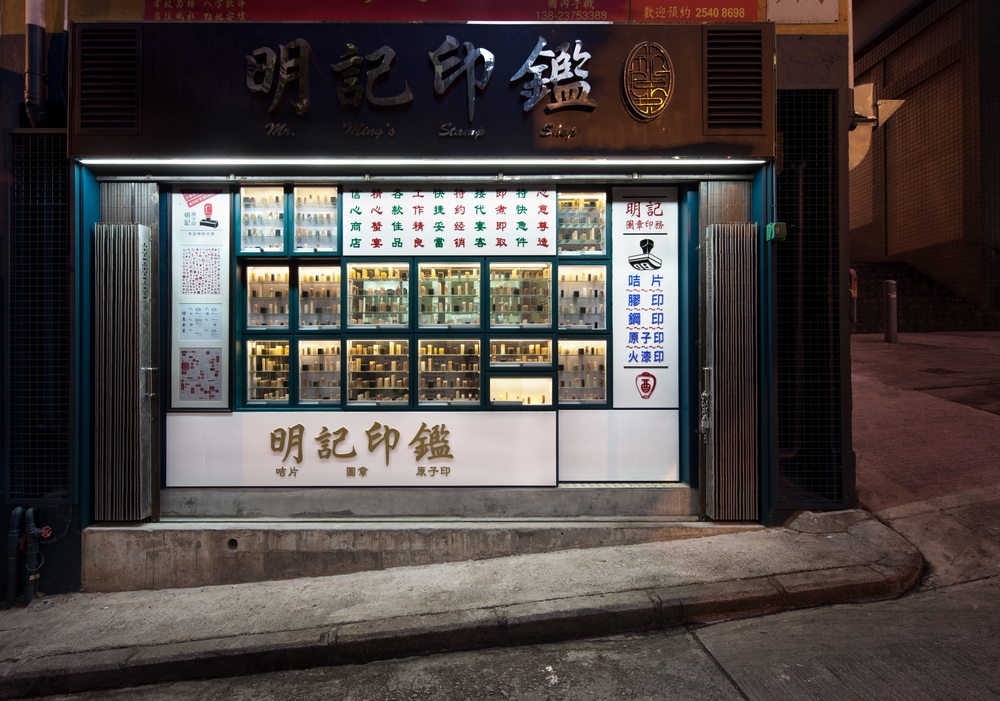The hidden restaurant Mrs. Pound can be found on the corner of Tai Ping Lane in Sheung Wan, the antique district of Hong Kong. The small space has an unassuming door, tucked behind a storefront displaying traditional Chinese stamps. The vestibule opens into a bar on the left and a pink dining area on the right. The upper level has an additional dining room swathed in green. To create assigned linear dining space, the kitchen and washrooms were placed in the back. “The simplicity of the layout is a result of the small properties typical of Hong Kong,” says Nelson Chow, director of Hong Kong-based design firm NC Design & Architecture Ltd.
The concept of Mrs. Pound was developed by Chow’s office, while the restaurant’s owners wrote the fictitious star-crossed narrative of the eatery’s invented owners: Mrs. Pound and Mr. Ming. The story revolves around burlesque dancer Mrs. Pound, who mysteriously disappears with her rumored true love, Mr. Ming. “Our two ideas coalesced into a simple interior-exterior relation whereby the conservative identity of Mr. Ming was transposed onto the facade, while the glamorous and feminine qualities of Mrs. Pound were focus within the interiors,” Chow says. Through exploratory research the nearby neighborhoods of Sheung Wan, Chow and his team sought to use stamp shops as inspiration for the facade, and to infuse local materials throughout the restaurant. A nod to burlesque shows and circuses is evident in the pendant lights and props that allude to Mrs. Pound’s flamboyant and audacious past.
The bar includes LED-lit bottle displays, green chalkboard menus, and a gold-trimmed countertop made of locally sourced tiles. The tiles follow a pink-to-green gradient to reflect the central contrast of pink and green colors throughout the interior. The floors are made of local Chinese tiles specific to 1960s Hong Kong. A contractor designed bar stools with seats made of green leather and wood veneer with mirror and gold-finished bases. “The inspiration for both the bar counter and stools is raw juxtapositions between luxurious refined materials like electroplated gold and local, everyday materials found through the streets of Sheung Wan,” Chow says.
The lights above the banquettes take cues from vanity mirrors and acrobat swings. The ring acrobat lights, fashioned by the firm Ricardo Lighting, are made of an extruded ring of glass with a gold mixture that houses dimple LEDs, along with a pink leather strap to conceal the electrical wiring. At the end of the restaurant is a large neon sing that adds atmosphere and a strong focal point to the interior.
